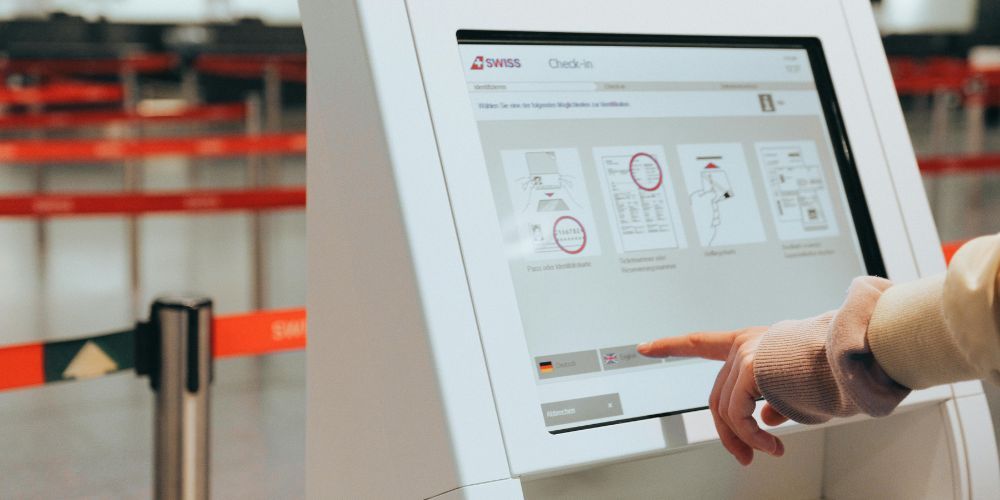Applying Design Thinking to Digital Transformation
Design thinking is more than just a buzzword; it’s a proven methodology for solving complex problems, fostering innovation, and driving impactful digital transformation initiatives. By focusing on empathy, collaboration, and iterative problem-solving, design thinking enables organizations to align their digital strategies with user needs and business goals. This post delves into the value of design thinking in digital transformation and provides a step-by-step guide for applying it to MarTech projects.

The Value of Design Thinking in Digital Transformation
Digital transformation efforts often fail when they prioritize technology over people. Design thinking counters this by placing users at the center of the process. It bridges the gap between technical feasibility, business viability, and human desirability. The result? Solutions that are not only innovative but also practical and user-focused.
Key benefits of using design thinking in digital transformation include:
- Enhanced User Experience: By empathizing with users, organizations can design seamless, intuitive digital interactions.
- Faster Iteration Cycles: Prototyping and testing early allows teams to pivot quickly, avoiding costly missteps.
- Cross-Functional Collaboration: Design thinking fosters collaboration across departments, ensuring alignment on objectives and outcomes.
- Reduced Risk: Continuous feedback loops mitigate risks by validating solutions before full-scale implementation.
A Step-by-Step Guide to Using Design Thinking for MarTech Projects
MarTech projects often involve complex integrations, high stakeholder expectations, and rapid technological advancements. Here’s how you can apply design thinking principles to ensure success.
Discovery Phase
The discovery phase serves as the foundation for any design thinking initiative, focusing on deeply understanding the problem space and collecting diverse insights from stakeholders and end users. This stage emphasizes uncovering hidden challenges, setting the groundwork for targeted and effective solutions.
Conduct User Research Across Key Stakeholder Groups
Interview marketers, sales teams, IT professionals, and customers. This step is critical in design thinking because it captures diverse perspectives and uncovers the full spectrum of challenges and opportunities. Each group interacts with the MarTech ecosystem differently, offering unique insights into hidden needs, operational pain points, and areas of alignment. Use surveys, workshops, and tools like Typeform, Zoom, or Miro to streamline the process, enabling structured discussions and effective data collection. This collaborative approach ensures solutions are innovative, practical, and aligned with the diverse needs of stakeholders.
Map Current User Journeys and Pain Points
Identify where users experience friction in existing MarTech workflows. Understanding these friction points is essential in design thinking because it reveals underlying inefficiencies and unmet needs. These insights help ensure that the eventual solutions directly address user pain points, streamline workflows, and improve overall satisfaction. Use tools such as Lucidchart, Miro, and Microsoft Visio to visualize the end-to-end user journey, highlighting gaps in the process and opportunities for improvement. Journey mapping with these tools facilitates collaboration among stakeholders, ensuring alignment and fostering innovative solutions.
Identify Technical and Operational Constraints
Assess existing MarTech stack capabilities and limitations to understand the technical landscape and identify areas for improvement. Use tools like Salesforce, HubSpot, or Marketo to audit current platform performance, data flows, and integration points. Align these insights with organizational goals by prioritizing requirements that directly address pain points and support strategic objectives. This alignment ensures resources are allocated effectively and that proposed solutions are both feasible and impactful in the context of the broader MarTech ecosystem.
Solution Design
This phase focuses on generating ideas and creating tangible concepts that address identified challenges. It is a pivotal step in the design thinking process, as it bridges the gap between discovery and implementation. By focusing on solution generation, teams can translate user insights into actionable concepts that are ready for validation and iteration. This phase fosters creativity while ensuring alignment with identified needs, operational constraints, and technical feasibility, ultimately setting the stage for impactful and user-centric solutions.
Create User Personas and Journey Maps
Develop personas that represent key user groups, detailing their goals, frustrations, and behaviors. Tools like Xtensio, MakeMyPersona, or PersonaApp can streamline this process by providing customizable templates and collaboration features. These tools enable teams to standardize persona creation, ensuring consistency and thoroughness, which is crucial for designing targeted and effective solutions.
Map ideal future-state journeys based on user needs. Tools such as Lucidchart, Miro, and Microsoft Visio can assist in creating detailed and collaborative journey maps. These tools enable teams to visually design and iterate on future-state journeys, ensuring alignment with user expectations while highlighting potential areas for innovation and improvement. Leveraging these tools fosters clarity and facilitates stakeholder collaboration throughout the process.
Develop Concept Prototypes
Use low-fidelity tools like sketches or wireframes to bring ideas to life, as they are often sufficient to gather valuable user feedback. Tools such as Figma, Sketch, Adobe XD, or Balsamiq can streamline this process, offering features that facilitate collaboration and rapid iteration. Ensure prototypes address primary pain points and technical constraints, focusing on the core functionality and user experience. Early feedback from these low-fidelity prototypes helps identify potential improvements without significant investment, making the design process more efficient and effective.
Define Success Metrics Aligned with User Needs
Establish KPIs such as adoption rates, user satisfaction scores, or task completion times. Incorporate OKRs (Objectives and Key Results) as a framework to connect these metrics to broader organizational goals. For example, an objective might be to enhance user engagement, with key results tracking increases in satisfaction scores or task efficiency. Using tools like Weekdone or Perdoo can streamline OKR implementation and tracking. This approach ensures that
success metrics not only reflect user-centric and business objectives but also provide a clear, strategic alignment with long-term goals.

Validation Process
Validation ensures that proposed solutions resonate with users and deliver value before scaling. This phase is crucial because it acts as a safeguard against launching ineffective solutions, saving time and resources. By engaging actual users, teams can uncover critical feedback that might not surface during earlier phases. It also builds confidence in the solution’s effectiveness, ensuring alignment with user expectations and business goals. Ultimately, validation strengthens the foundation for scalable, user-centered implementations.
Test Prototypes with Actual Users
Conduct usability tests and gather qualitative feedback. This step is essential because it provides direct insights into how real users interact with your solution, uncovering issues that may not be evident to designers or developers. Real users bring authentic perspectives that validate whether the solution meets their needs, aligns with their expectations, and delivers tangible benefits. Their feedback ensures the solution is both functional and user-friendly, ultimately increasing adoption and satisfaction.
Observe users interacting with prototypes to identify areas of improvement. Utilize tools and services such as usability testing platforms like UserTesting, Optimal Workshop, or Hotjar to gather detailed insights. These platforms enable session recordings, heatmaps, and user feedback collection, providing actionable data to refine your prototypes. Leveraging these tools ensures that real user interactions guide improvements, enhancing the final solution's effectiveness and user satisfaction.
Gather Feedback Through Structured Evaluation
Use surveys, interviews, and analytics to assess user responses. Platforms like SurveyMonkey or Typeform can help design and distribute surveys effectively, while tools such as NVivo or Dedoose allow for advanced qualitative analysis of interview data. Additionally, analytics tools like Google Analytics or Tableau can track user interactions and provide actionable insights. These tools ensure structured and efficient feedback collection, helping teams identify patterns and prioritize improvements.
Prioritize feedback based on impact and feasibility. Involving a variety of stakeholders in this step enriches the process by ensuring diverse perspectives are represented. Each stakeholder group—from end users to executives—offers unique insights that can highlight different aspects of the solution’s performance. This collaborative approach fosters buy-in, aligns the solution with long-term organizational goals, and ensures it remains adaptable to varying needs across departments and user groups.
Iterate Based on User Insights
Refine prototypes iteratively, incorporating user feedback at each step. Iterations are valuable because they allow teams to test, learn, and improve progressively, reducing risks and ensuring the solution evolves to meet user needs effectively. Each cycle provides an opportunity to address overlooked issues and incorporate new insights. Leverage tools like Figma, InVision, or Adobe XD for prototyping and collaboration. Validate revised solutions with diverse stakeholders, ensuring they address identified issues and align with both user expectations and long-term organizational objectives.
Implementation Strategy
Implementing MarTech solutions requires careful planning and monitoring to ensure success. Effective planning involves clearly defining objectives, establishing timelines, and identifying resource requirements to ensure alignment with both technical and business goals. Additionally, it’s essential to outline measurable success criteria to track progress. Tools such as project management platforms (e.g., Asana, Trello) can aid in organizing tasks and maintaining accountability.
Monitoring success requires robust analytics and feedback mechanisms. Employ tools like Google Analytics, Mixpanel, or Tableau to track user adoption, engagement metrics, and satisfaction scores. Regularly scheduled review meetings with stakeholders ensure that progress aligns with expectations, allowing for adjustments based on real-time data and user feedback. Together, these practices build a foundation for sustainable, long-term success.
Phase Rollout to Manage Risk
Deploy solutions incrementally, starting with pilot groups. Pilots are invaluable as they allow teams to test solutions in controlled environments, minimizing risks and gathering actionable insights before a full-scale release. Use phased rollouts to gather detailed feedback, address issues early, and refine the solution iteratively based on real-world performance. This approach not only reduces the likelihood of widespread issues but also builds confidence among stakeholders and end users. Tools like Jira, Monday.com, and Smartsheet can help manage phased deployments effectively and ensure smooth transitions.
Monitor User Adoption and Satisfaction
Track key metrics such as usage rates, error reports, and satisfaction scores. Tie these metrics back to the OKRs established earlier to ensure alignment with broader organizational goals, such as improving user engagement or increasing operational efficiency. Recognize that change can be challenging for users and incorporate comprehensive training programs to address this. Effective training should emphasize not only how to use the new solution but also the value it brings to their roles. Tools like Trainual, SAP Litmos, or LMS platforms can help deliver scalable, customized training solutions. Providing ongoing support and clear communication helps to ease transitions and fosters confidence in the new system.
Maintain Feedback Loops for Continuous Improvement
Establish channels for ongoing user feedback. Tools like Slack channels, Microsoft Teams, or dedicated platforms such as Feedbackly or UserVoice can facilitate continuous input from users. Emphasize the importance of creating a culture where feedback is welcomed and acted upon. Use this feedback to inform future iterations and enhancements, focusing on incremental improvements that align with established OKRs. Regular updates based on user insights not only enhance the solution but also build trust and engagement with stakeholders, ensuring the product remains relevant and effective over time.
Design thinking transforms how organizations approach digital transformation by aligning technology with human needs and business goals. For MarTech projects, it ensures solutions are not only innovative but also user-friendly and scalable. By following this step-by-step guide, organizations can maximize the impact of their MarTech initiatives while minimizing risks and inefficiencies.
Ready to apply design thinking to your next digital transformation project? Start with empathy, and let the process guide you toward innovative, impactful solutions.










